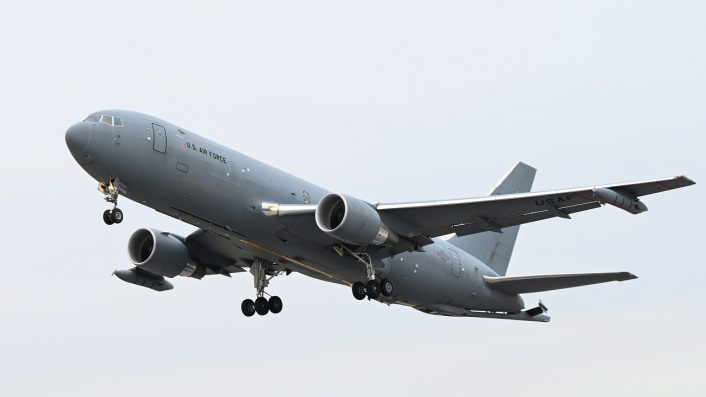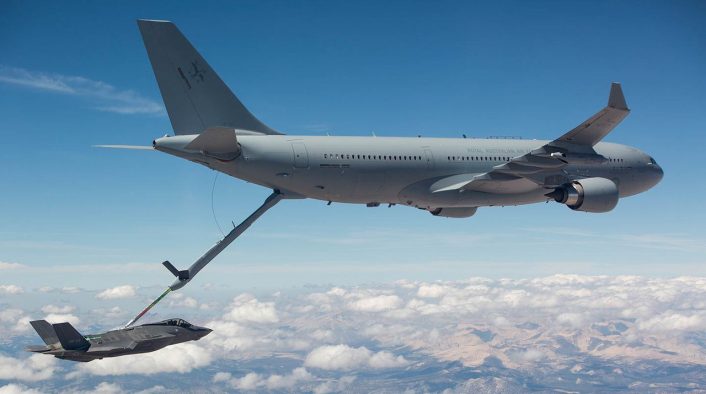After suspending the acquisition of the KC-46 Pegasus, Italy is now looking again for a new tanker, possibly from another vendor.
A couple of weeks after halting the acquisition of the KC-46 Pegasus, the Italian Air Force has now started the procedure for the acquisition of a new replacement for the KC-767A tanker. In fact, the service has communicated the decision to the Ministry of Defense last week, on Jul. 19, 2024, mentioning that the lack of a replacement could compromise its operational capabilities.
Similarly to the one previously suspended, the new program has been named “Renewal, strengthening and Integrated Logistic Support of the Italian Air Force Heavy Multirole Tanker fleet”, but this time it is worth over € 1.41 billion instead of the previous € 1.2 billion. Sources with knowledge on the matter said that other vendors/options are also being considered.
I’m told by someone with knowledge that other vendors/options are being considered. https://t.co/EgLBcfoDkQ
— David Cenciotti (@cencio4) July 11, 2024
Considering the actual geopolitical scenario and the mutated international context, the Italian Air Force detailed a new technical operative requirement for the long/extra-long range air-to-air refueling capability as well as the transport of personnel and cargo. The document mentions that this need was formally recognized in 2021, however the requirement has not yet been satisfied.
Similarly to the KC-46 program, the Italian Air Force is now looking for six new tankers, as well as the integrated logistic support. The investment will be distributed over the course of ten years, with the program set to start in 2025
The botched KC-46 acquisition
The Italian Air Force unexpectedly decided to halt the acquisition of the KC-46 Pegasus with a communication to the Ministry of Defense on Jun. 24, 2024. The decision was attributed to “changed and unforeseen needs,” without adding further details to understand whether they are strictly related to the tanker itself or to other priorities of the ItAF.
In 2022, the Italian Air Force launched the program for the “Renewal, strengthening and Integrated Logistic Support of the Italian Air Force Heavy Multirole Tanker fleet”, which planned to acquire two new KC-46 tankers and upgrade the current four KC-767A tankers to the same standard. The conversion, however, was judged as not feasible.
The commission which evaluated the project found as the only viable solution the acquisition of six new aircraft already at the same standard currently in service with the U.S. Air Force (which the document called KC-767B). The project also planned to include a contract clause under which Boeing would have bought back the KC-767As, as they are expected to be retired by 2035.

The KC-767As, ordered in 2002 and delivered between 2011 and 2012, are part of a very small global fleet, with Japan being the only other operator. This resulted in a high cost of ownership and increasing obsolescence issues, and that’s why it was decided to get the aircraft in the same configuration as the U.S. Air Force.
The 767s are among the most in-demand assets of the Italian Air Force: while their primary role is AAR (Air-to-Air Refueling), the KC-767A, in both Cargo, Combi and Full Pax configurations, can be used for strategic transport missions as well as MEDEVAC (Medical Evacuation) or Bio-Containment missions. With more than 30,000 flight hours since they entered active service (a milestone achieved in 2020), the KC-767 fleet has proved to be a force multiplier not only for the Italian MOD but also for NATO, as they are also assigned to the EATC (European Air Transport Command).
A new possible candidate
Should the previous program have gone ahead, Italy would have been the only European operator of the KC-46, as France, Spain and the U.K. acquired the A330 MRTT (Multi-Role Tanker Transport), while Belgium, Czech Republic, Germany, Luxembourg, Norway and the Netherlands share the A330 MRTT tankers of the NATO MMF (Multinational MRTT Fleet). Considering the increased cooperation in the defense sector in Europe today, it might make sense if also Italy starts looking to the A330 MRTT.
The move wouldn’t be much of a surprise as sources with knowledge on the program stated that other vendors/options are being considered. Also, let’s not forget that Italy needs both flying boom and “hose and drogue” system to refuel its aircraft, and Boeing and Airbus are the only vendors to offer both options on their tankers.
The A330 MRTT, based on the successful A330-200, accumulated 82 orders from 15 countries around the world, with more than 275,000 flight hours since its introduction in 2011. The MRTT has been designed as a dual-role air-to-air refueling and transport aircraft since the start.

The A330 MRTT can carry up to 111 tonnes of fuel, which Airbus says is the highest capacity of all tanker aircraft available today. This fuel can be offloaded through four refueling stations, which include the two Cobham 905E under-wing pods, the Cobham 805E Fuselage Refuelling Unit and the Aerial Refuelling Boom System.
The tanker can also carry a maximum payload of up to 45 tonnes, with up to 300 passengers and up to 37 tonnes of cargo in the lower deck. Cargo to be conveniently stored inside the lower deck in a variety of cargo options covering the full range of existing under-floor cargo containers and pallets, while large items are loaded through a cargo door.
In 2018, Airbus signed an agreement with Lockheed Martin to jointly explore opportunities to meet the growing demand for aerial refueling for U.S. defense customers, centered around the A330 MRTT. The two companies even explored the idea to offer contract aerial refueling services, but later abandoned the plan, before Lockheed Martin ended its effort also for the tanker bid to the U.S. Air Force.
Airbus is now working on the fully Automatic Air-to-Air Refueling (A3R) technology with the boom system, which is intended to reduce air refueling operator (ARO) workload, improve safety and optimize the rate of air-to-air refueling transfer in operational conditions.

